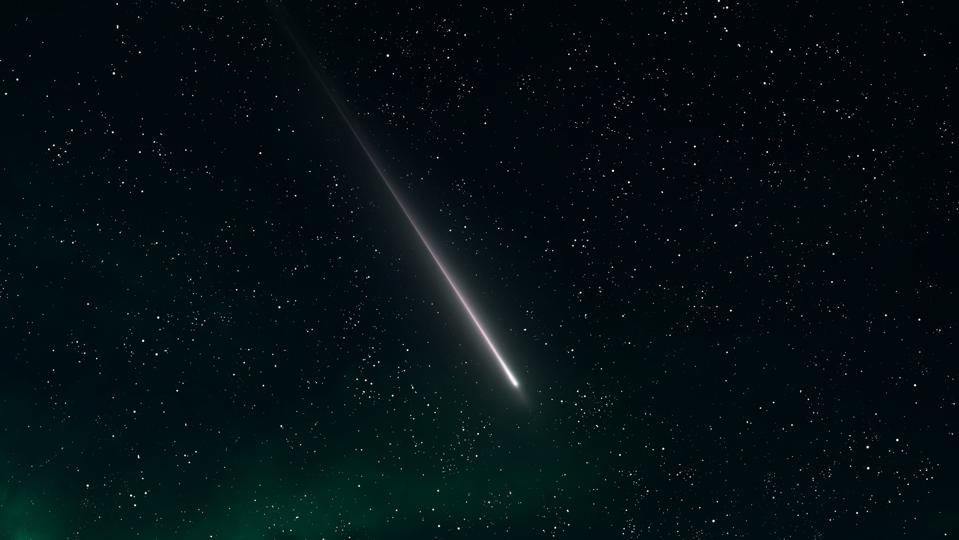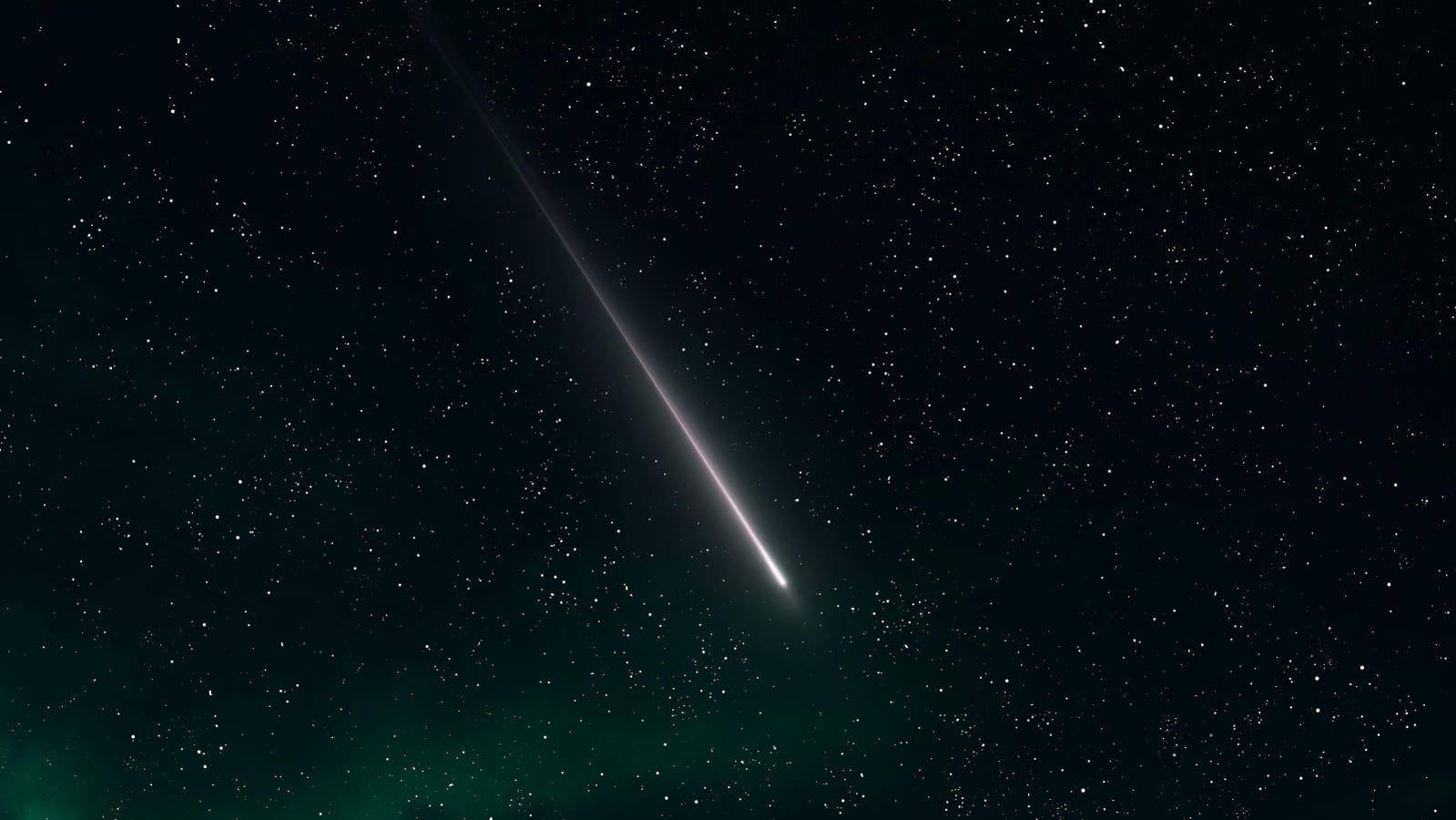
Long trail of a meteorite in the sky. Meteoroid against the background of stars. Glow of bright meteor at night.
getty
October’s might skies are famous for “shooting stars,” with the Taurid meteor shower active all month and the famous Orionids — the product of Halley’s Comet — peaking on Oct.21-22 just as comet Lemmon (C/2025 A6) and comet SWAN R2 (Comet C/2025 R2) also peak.
However, before those more famous events take over, consider a stargazing session peppered with meteors from the Delta Aurigid meteor shower, which peaks overnight on Saturday, Oct. 11, through Sunday, Oct. 12, according to In-The-Sky.org, producing around 10 meteors per hour under good conditions. While not as prolific as upcoming showers, the Aurigids may provide a prelude to the month’s bigger sights.
When And Where To Look
The Delta Aurigids are best observed in the early hours of Oct. 12, though you may see them before midnight, too.
Their radiant point lies in Auriga, “the Charioteer,” a little-known constellation that is now prominent high in the northeastern sky after dark. From the Northern Hemisphere, Auriga climbs overhead in the early hours of the morning, giving observers a wide view of the shower’s activity.
What You’ll See
At peak, you can expect to see around 10 meteors per hour, so it’s wise to plan a late/early stargazing session and hope for “shooting stars.”
Aurigids tend to be fast, traveling at 64 kilometers per second, according to The Sky Live, occasionally producing brighter streaks that stand out against the backdrop of autumn constellations.
Although “shooting stars” can appear anywhere in the night sky, it’s a great excuse to get familiar with Auriga and its famous bright star Capella, one of the most luminous stars visible in the night sky.
Auriga (The Charioteer) constellation, vector illustration with the names of basic stars against the starry sky
gettyObserving Tips
As with all meteor showers, the key is finding a dark location far from city lights, but this is an event to know about if you’re already somewhere dark — it’s not one to make a special plan for. Use a reclining chair, dress warmly and allow at least 20 minutes for your eyes to adapt to the dark.
As always with meteors, you need a wide field of view, so resist the temptation to use binoculars or telescopes, or to look at your smartphone. Patience is essential.
What’s Next In The Night Sky
The Aurigids are a taster for the rest of October’s meteors. A few nights later, on Oct. 12, the moon will rise alongside the constellation Orion around midnight, heralding the return of the winter night sky. In the very early hours of Oct. 14, a last-quarter moon will form a wide triangle with Jupiter and Pollux.
However, the month’s highlight comes on Oct. 21-22, when the Orionid meteor shower peaks under moonless skies — the same night that comet Lemmon (C/2025 A6) and comet SWAN R2 (Comet C/2025 R2) shine their brightest.
The times and dates given apply to mid-northern latitudes. For the most accurate location-specific information, consult online planetariums like Stellarium.
Wishing you clear skies and wide eyes.

